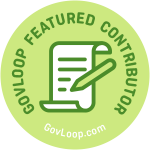The common goal of most government programs is citizen participation. A new portal or website is an innovative way to deliver a better customer experience and drive efficiency and savings for your organization.
However, agencies often build shiny new programs without an effective plan to spread the word about them. If no one knows that your new website or portal exists, you run the risk of it going unused.
This is problematic because all too often, public sector organizations spend precious budget dollars on awesome new programs that nobody knows about, which wastes time, manpower and money. Developing a communications plan that leverages digital tools is one way to overcome this challenge.
Whether you’re trying to drive license registration, increase the number of people looking into local pet adoption online or boost volunteer hours, you and your team must take modernization a step further to not just digitize the service but also the communications surrounding it. You have to go to your target audience on the channel they are on to effectively lead them to your service.
So, what’s the best way to do this? Here’s seven tips:
1. Brand the program consistently. A memorable but recognizable brand is key for driving recognition of and trust in your service. For example, instead of calling their new platform “the VA’s new health portal” the Veterans Affairs Department went for “My HealtheVet” (more on this next week).
2. Develop a strategy. Build a communications flow that starts with reach, moves to awareness and then engages your audience. Be aware of who your audience is and choose engagement tactics that will resonate with them. Furthermore, don’t just throw content to the wall to see if it sticks. Be strategic about how and what you send.
3. Build your audience. Use targeted communications in tandem with visibility in high-traffic areas like your website and partner websites. Overlays and cross promoting can help you capture more subscribers and engage new community members.
4. Segment your audience. Leverage targeted messages to deliver to a segmented audience based on their demographic characteristics. Your communications have a better chance of making the mark if you plan your segment strategy in advance and ensure you are sending the right information to the right audience at the right time.
5. Explain the benefits. Speak to your audience’s needs, not just those of your organization. Try using succinct language that would make your audience feel like they are missing out on something important if they didn’t act.
6. Ensure efficient deliverability. All the great content in the world won’t matter if your messages aren’t being delivered to your audience. Leverage a reputable marketing automation tool to ensure your communications have a good deliverability rate, which will ultimately maximize impact.
7. Adjust as you go. Discover what metrics are important to your project and monitor what is working and what is not. From there, it’s important to be prepared to adapt your communications plan. A/B testing is a good place to start to see what subject lines, content and images achieve higher open and click through rates.
Next week, I’ll be sharing some stories from government organizations that have driven program success through digital communications, but I also want to hear from you! Does your agency have some particularly savvy best practices? How have you overcome program communications challenges? Start a discussion in the comments below!
Courtney Belme is part of the GovLoop Featured Contributor program, where we feature articles by government voices from all across the country (and world!). To see more Featured Contributor posts, click here.





Great tips! There are so many good programs the government is offering but if it no one knows about them it’s pointless. I’m interested to read the case studies next week and how agencies are combining digital communication tools and old school tactics, like word of mouth and referrals, to drive program success.